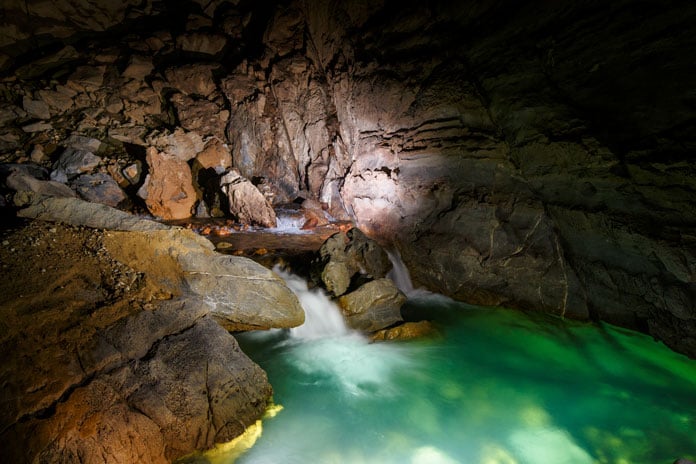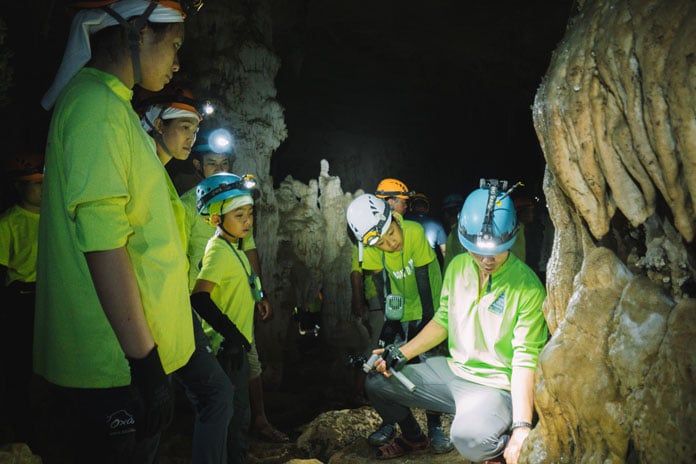Phong Nha - Ke Bang Cave Systems
Phong Nha - Ke Bang National Park is located in the North of the Truong Son mountain range, crossing Bo Trach, Minh Hoa and Quang Ninh Districts of Quang Binh Province, Vietnam. It is one of the largest national parks and also the area with the widest continuous karst mountain range in Vietnam. Phong Nha - Ke Bang National Park has been recognized by UNESCO as a world natural heritage site twice, based on two criteria: geology - geomorphology and biodiversity - ecosystems.
The Phong Nha - Ke Bang area has more than 400 caves with different sizes, lengths and features. The cave systems have been explored by The British Vietnam Caving Expedition Team.
The feature limestone massif at the Phong Nha - Ke Bang National Park.
Phong Nha - Ke Bang is considered as a large, valuable, and internationally significant geological museum. Most of the park's area is karst and is linked to the Hin Namno National Biodiversity Conservation Area of Laos, forming a large Karst region. This Karst region covers 3/4 of the park and has an elevation of 300 - 1,100m. It is located in the Northwest of Quang Binh Province and stretches for about 100 km along the Vietnam - Laos border.
The geological, geomorphological, climatic, and ecological features here have created beautiful natural landscapes with the most notable being the extensive cave systems. More than 300 caves have been explored with a total length of 210 km. There are three major systems: the Phong Nha Cave System, the Vom Cave System and the Mooc Spring System.
Phong Nha Cave System
The Phong Nha Cave System is the longest cave system in Phong Nha - Ke Bang, with a length of over 100 km and comprising over 140 caves. Khe Ry Cave is the longest underground river cave in Asia, Hang En is one of the biggest caves in the world, and Son Doong Cave, also part of the Phong Nha Cave System, has the largest cave passage in the world. Son Doong Cave is located deep in the primary rainforest of Phong Nha - Ke Bang National Park, is over 9 km long, more than 150m wide and 200m high. Phong Nha Cave is the final cave in the system, where the water drains out to the Son River and then to the sea.
The outstanding caves in the Phong Nha system
Phong Nha Cave
Phong Nha Cave is a renowned natural wonder that boasts impressive geological and aesthetic values. It is an impressive river cave with a total length of 11 km. The British Vietnam Caving Expedition Team explored and surveyed the cave in 1990 and 1992, and captured stunning photographs, which were later featured in the International Caver magazine, introducing Phong Nha to a wider audience. Today, Phong Nha Cave is a popular tourist destination in Quang Binh, Vietnam. Tourists can take a boat trip along the Son River to reach the cave, where they can marvel at the stunning stalactites with unique formations.
Impressive stalactices and stalagmites in Phong Nha Cave.
Hang Son Doong - the largest cave in the world
Son Doong Cave is a part of the Phong Nha Cave System and the entrance was discovered in 1990. It was explored and surveyed in 2009. The cave runs along a large fault line in a north-south direction. It is estimated to have formed between 2 - 5 million years ago and is approximately 150 meters wide, over 200 meters tall, and nearly 9 kilometers long. Its estimated volume is 38.5 million cubic meters. With these dimensions, Son Doong Cave surpassed Deer Cave in Gunung Mulu National Park in Malaysia (100 meters tall, 90 meters wide, and 2 kilometers long) to become the largest natural cave in the world.
Inside Son Doong Cave, there is a section with a width of 91.44 meters and a ceiling height of almost 243.84 meters, which is large enough to fit a 40-story building. The cave has an underground river that is 2.5 kilometers long and features stalagmites as tall as 80 meters. It also has two "dolines" (collapsed sections of the ceiling that allow sunlight to enter) which are beneficial for the rainforest ecosystem thriving within the cave.
Learn more about Son Doong Cave at: Hang Son Doong - The World’s Largest Cave.
The overview of Doline 1 inside Son Doong Cave.
Hang En - one of the largest caves in the world
The British Vietnam Caving Expedition Team surveyed Hang En in 1994. At that time, it took the team three days to hike from Phong Nha to access the cave. Hang En is one of the most impressive caves in Vietnam, with a 200m wide, 145m high passage. The cave is 1.6km long and has some spectacular stalactite formations in the main passage. There is also a section of fault breccia (black and white rock) with several fractures, which is quite unusual.
The exit of the cave is 120m high and 110m wide. Thousands of Hang En birds live here and at sunset, the sight of the birds returning to the cave after a day of foraging is very impressive. Son Doong is about 2 km from the exit of Hang En. The stream flowing through Hang En enters a valley and joins with a stream from Hang Khe Ry, flowing into Son Doong. That is why Hang Khe Ry and Hang En are considered to be some of the main feeders of the Phong Nha Cave system.
Learn more about Hang En Cave at: Hang En Cave.
The campsite inside Hang En Cave.
Hang Va - a cave with unique stalactites
Among the surveyed caves, Hang Va is considered to have the most unique stalactites. Hang Va entrance was discovered in 1992 and was explored and surveyed in 2012. It is 1,686 meters long. Hang Va is particularly unique because it has a system of hundreds of uniformly sized stalactites. The stalactites are cone-shaped formations reaching heights of over 2 meters. The tower cones are located within enormous gour pools. It is not known exactly how these tower cone formations were created. One theory is that thin layers of calcite, also known as calcite rafts have built up on the surface of the pools. These thin layers float on the water surface until drops of water landing on them cause them to sink to the bottom of the pool. Over thousands of years, piles of rafts build up to form cones.
Learn more about Hang Va Cave at: Hang Va Cave.
Cone-shaped formations inside Hang Va Cave.
Hoa Huong Cave - an ancient cave
Hoa Huong Cave was surveyed in 2012 and 2016, with a total length of 3910 meters, and a depth of 118 meters. The rock formations that Hoa Huong Cave passes through are about 251 - 360 million years old, with an estimated age of 5 million years for Hoa Huong Cave.
Hang Vom Cave System
The Vom Cave System is a system of around 70 explored caves with a total length of over 50 km and is also a significant river cave system in the Phong Nha - Ke Bàng limestone massif. This system starts with Ruc Ca Roong Cave located at an elevation of around 300 meters above sea level. After passing through many caves, the river resurges at Hang Vom, and flows into the Chay River, and then the Son River and finally the sea.
Prominent caves in the Hang Vom system
Hang Vom (the top entrance is also known as Vinh Dai Cave)
Vom Cave is approximately 4km from the west branch of Ho Chi Minh Road (Km16). The cave has a length of over 15 km and is one of the largest caves in the Vom Cave System. The entrance to the cave is 100m wide and 50m high, and to enter the cave you have to swim across a large lake at the entrance. Inside the cave there is a 200m high and 50m wide daylight shaft. In addition to Vom Cave, there are several other notable caves in the system such as Dai A Cave, Over Cave, and Pygmy Cave. Dai A Cave, also known as Tiger Cave, has a length of 1,616m, a depth of 46m, and an entrance that is 50m wide. Over Cave is about 100m from Tiger Cave and has a length of 3,244m, a depth of 104m, an entrance that is 30m wide and 25m high, and a widest point of 125m. Pygmy Cave has a length of 845m and a depth of 94m.
The Hang Vom entrance towards primaeval forests.
Paradise Cave
Paradise Cave is a dry branch of Vom Cave. The entrance is located 16 km west of Ho Chi Minh trail and formed in ancient Karst with an age of 350-400 million years. Paradise Cave is over 3.5 km long, with a width ranging from 30 to 100m and the widest point reaching 150m; the height from the cave floor to the ceiling is around 60-80m. The dry passage connects with the river passage of Vom Cave.
Dai Cao Cave
The cave has a length of approximately 1.6km with 3 entrances. It was surveyed and measured by experts from the British - Vietnamese Cave Exploration group in 1994. The Dai Cao Cave is a unique combination of wet and dry passages. In addition, many rare animal footprints, such as wild boar and serows, have been noted at the entrance of the cave.
Hang Ba Cave
Hang Ba is one of the caves that was surveyed in 1994 along with Hang Dai Cao, with a length of about 1 km. Hang Ba is described as a cave that is truly for experienced explorers.
Maze Cave
Maze Cave is one of the caves that was explored and measured by The British Vietnam Caving Expedition Team in 1994. The cave has many complex branches and is nearly 4 km long, living up to its name. There are excellent examples of gastropod or snail fossils in the passage walls.
Nuoc Mooc Cave System
There are over 50 caves, with a total length of about 20 km. The Nuoc Mooc Cave System is quite mysterious because as yet the source of the underground stream has not been explored. The cave entrances are difficult to access. The highlight is the Mooc Stream, which wells up from this system, and the water body at the outlet is about 90 square meters. Most of the caves in this system are concentrated near the Mooc Stream and west of the Chay River, including the Xuong valley (located in the center of the National Park).
Learn more about: 10 Most Famous Caves in Vietnam You Should Explore.
The Oxalis Experience.
Whether you prefer long treks, camping in a cave, sleeping under the stars in the jungle, swimming underground in river caves, explore the huge dry caves or just taking an exploratory day trip, Oxalis Adventure Tours can provide the right amount of adventure just for you.



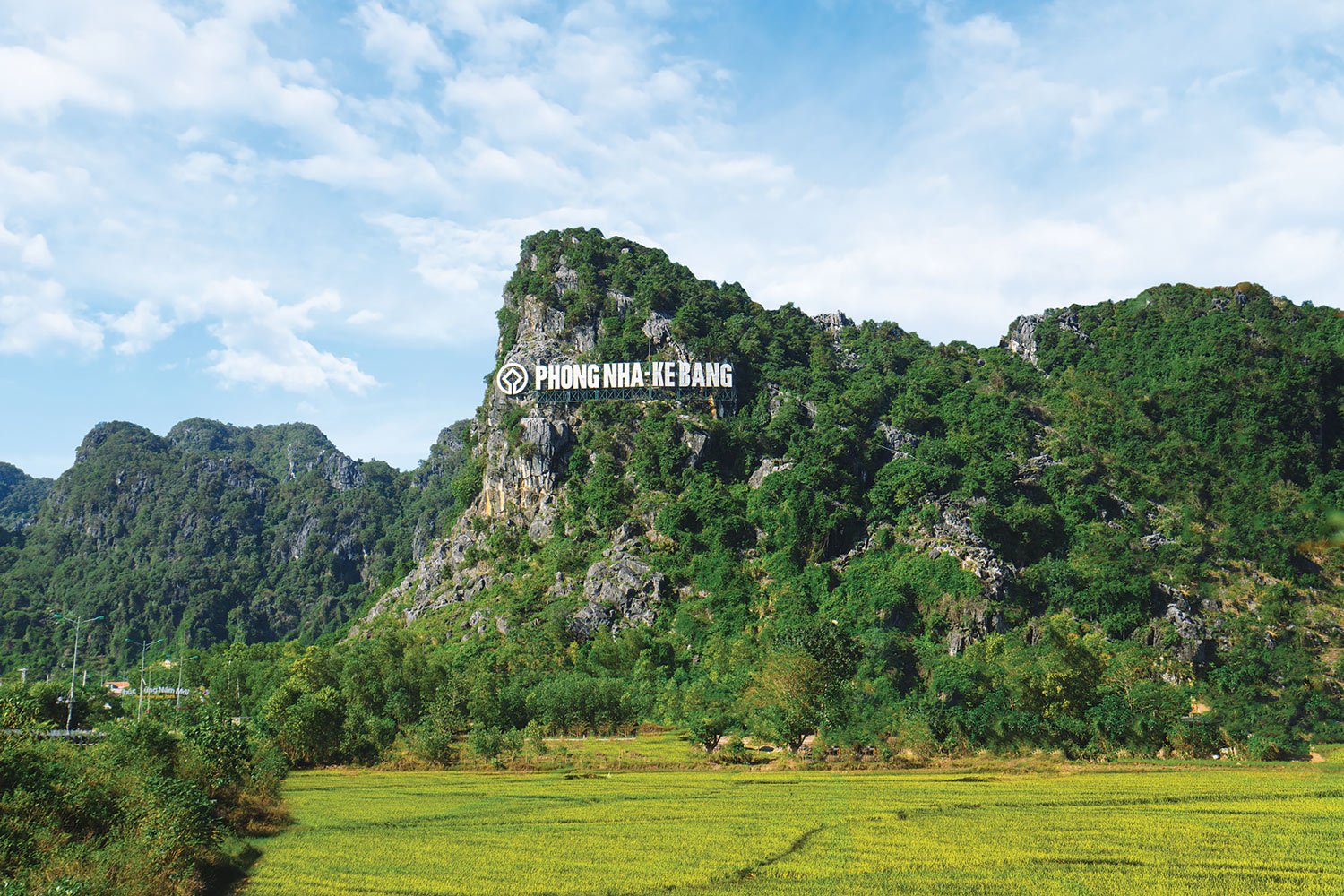
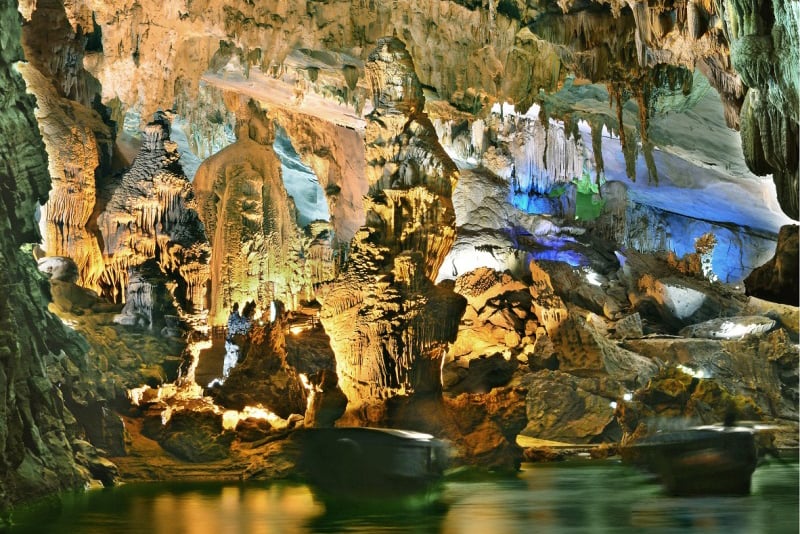
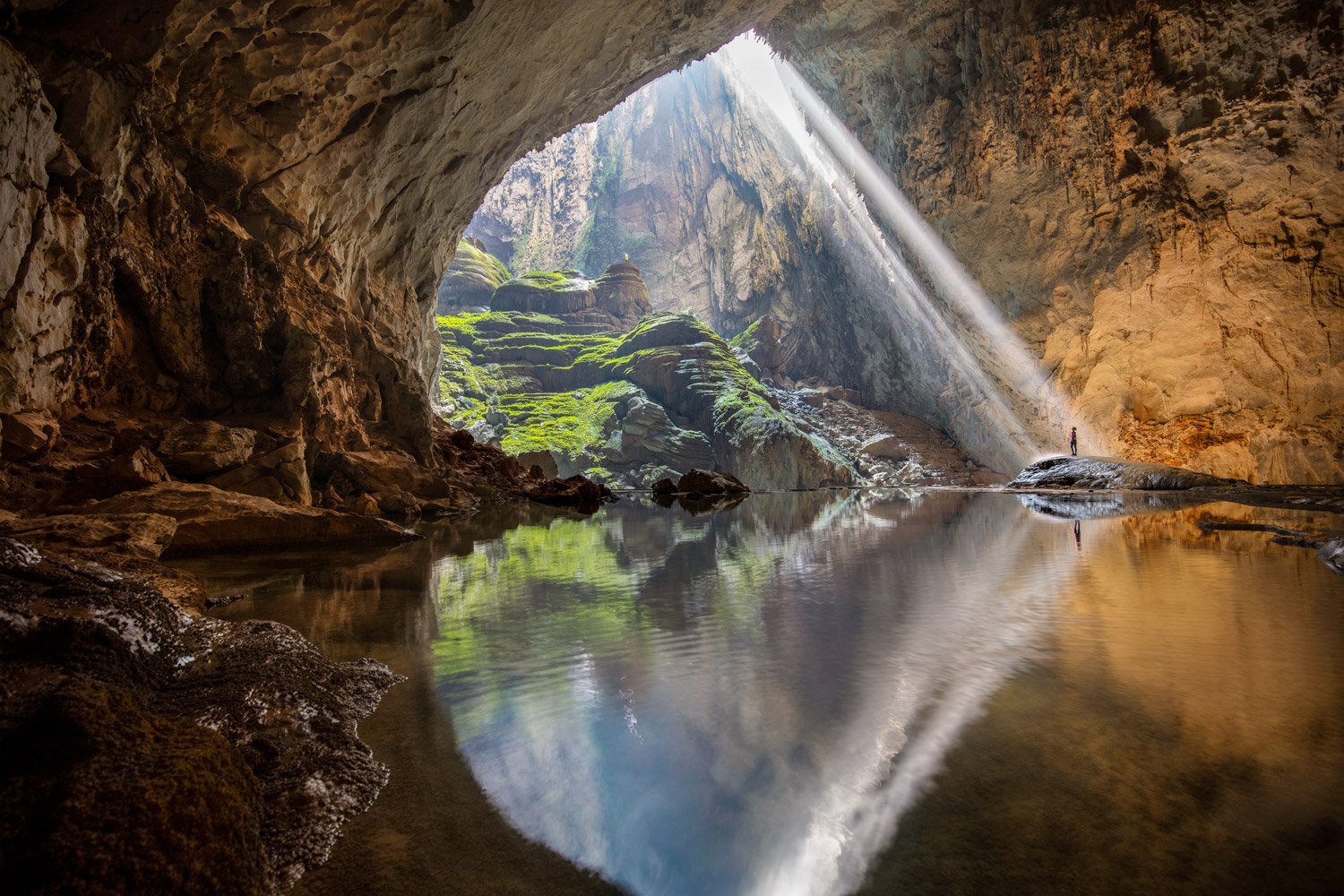
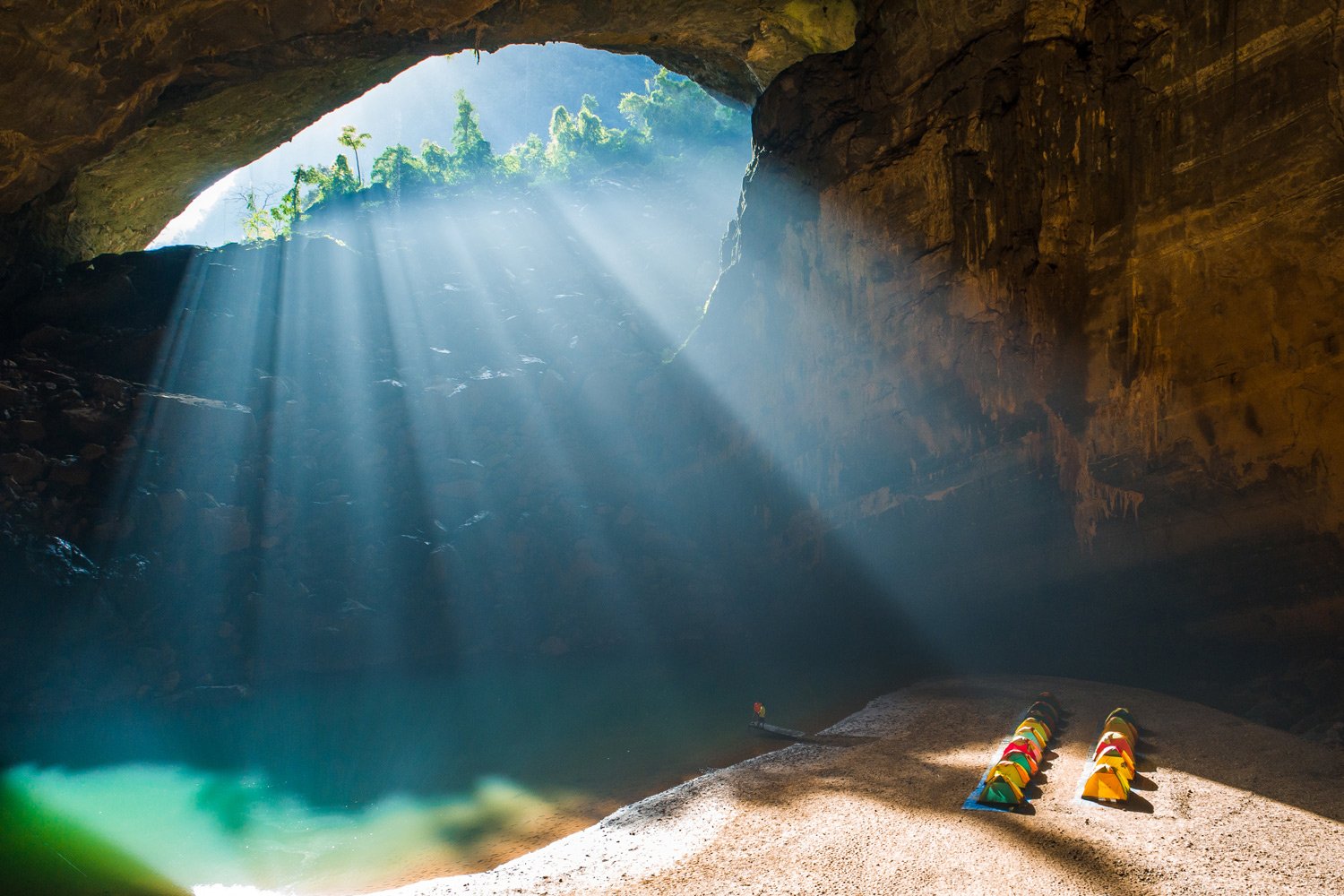
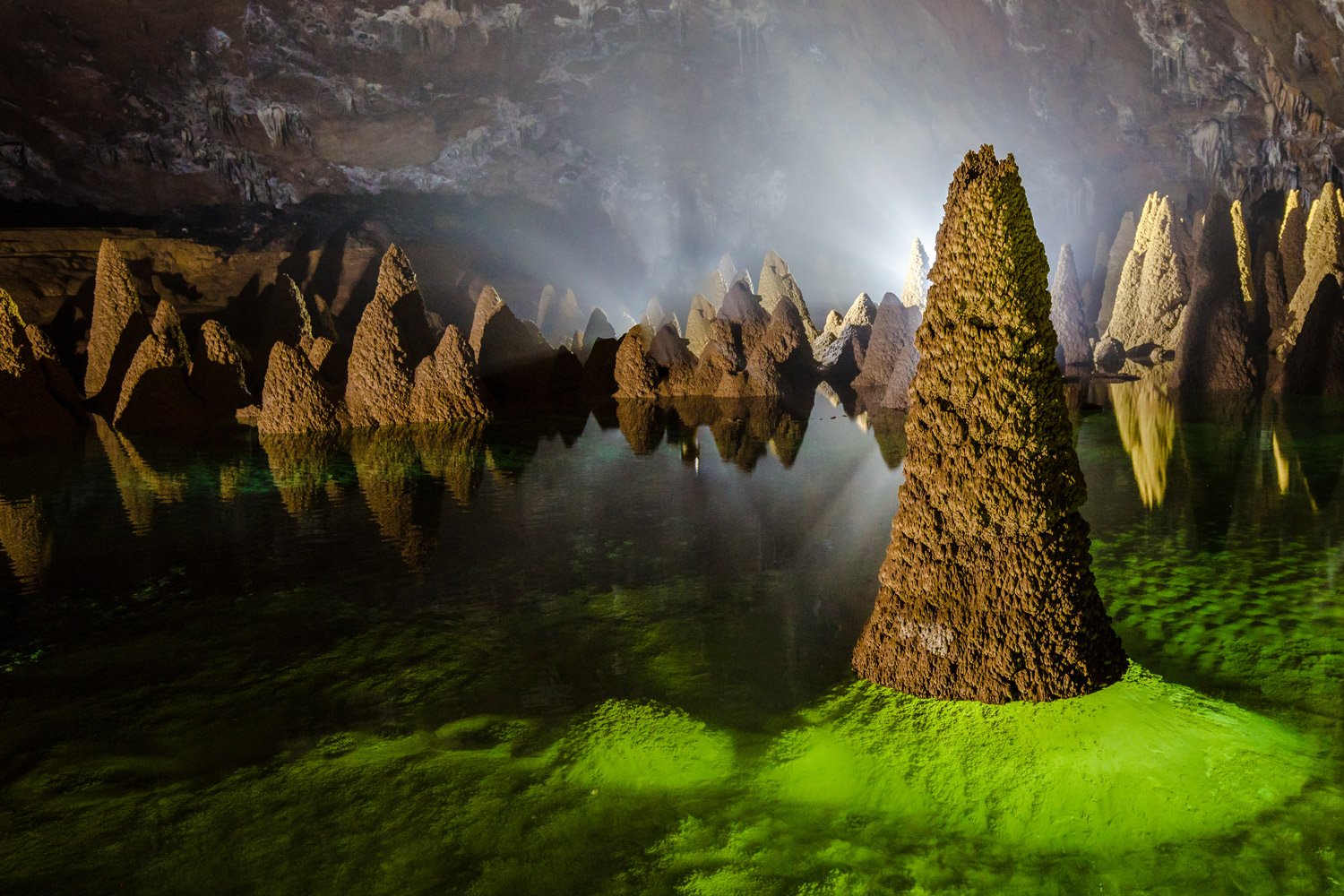
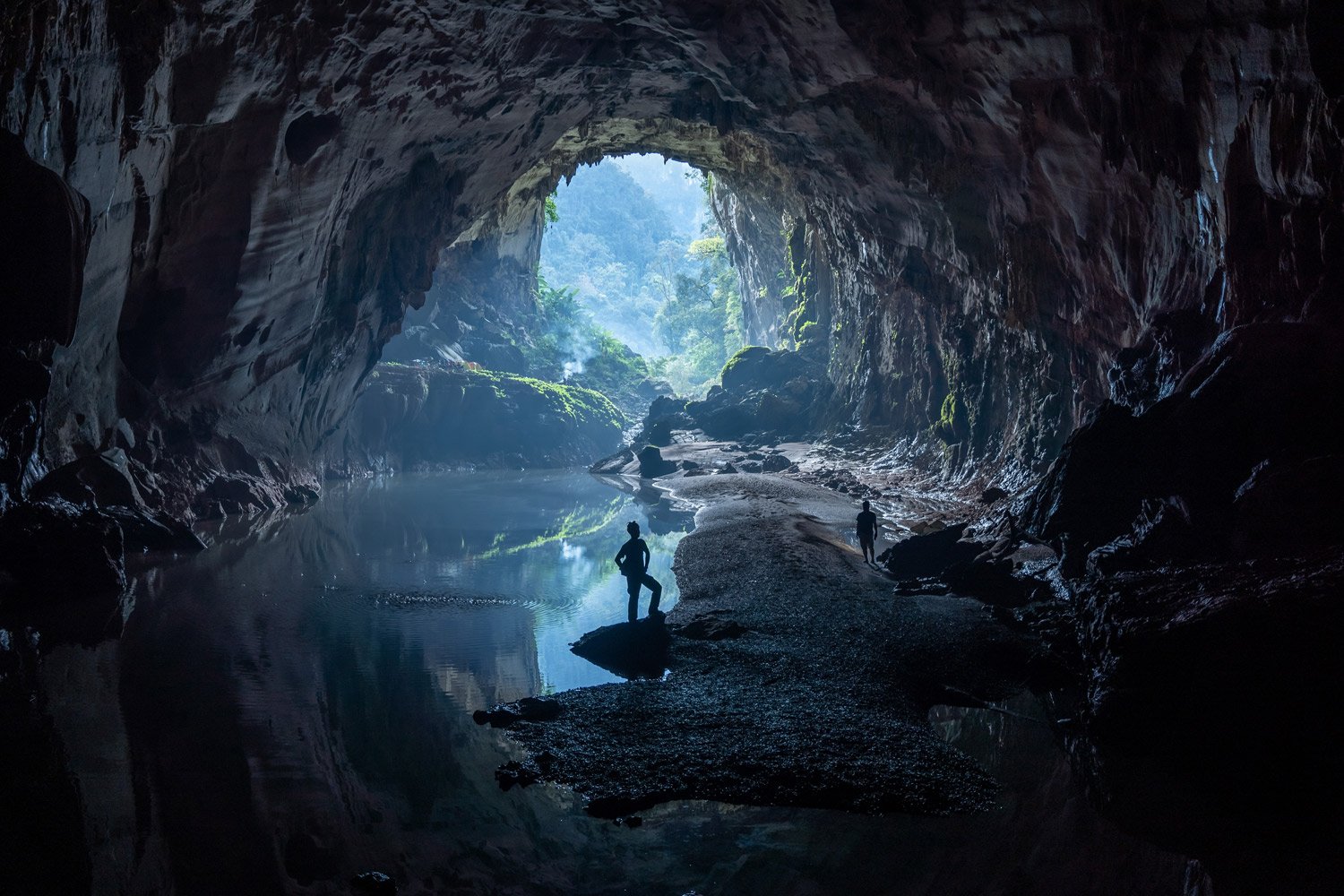
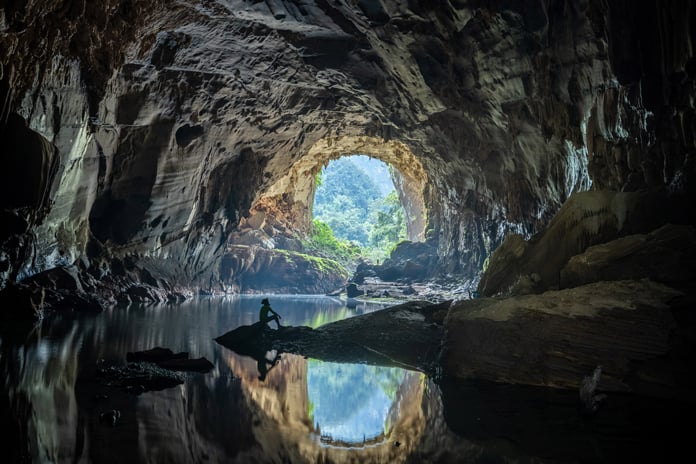
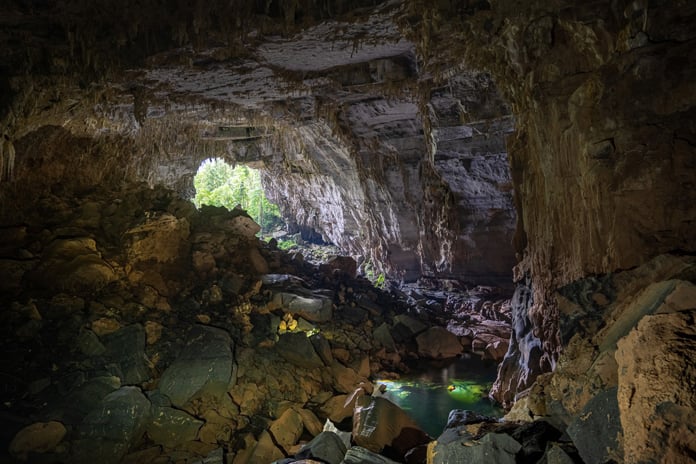
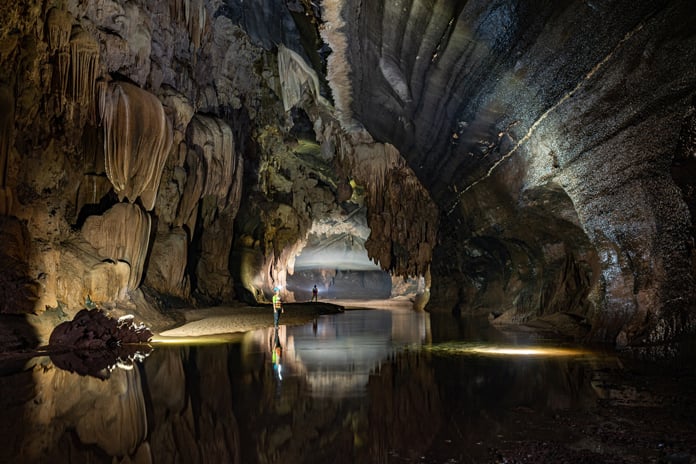
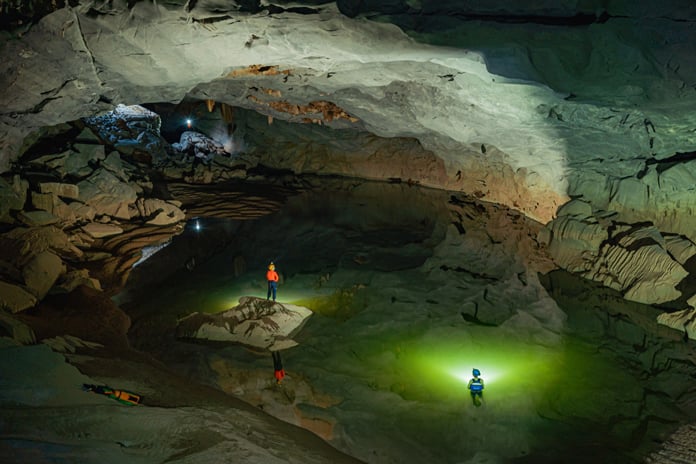
__637051765075307793.jpg)
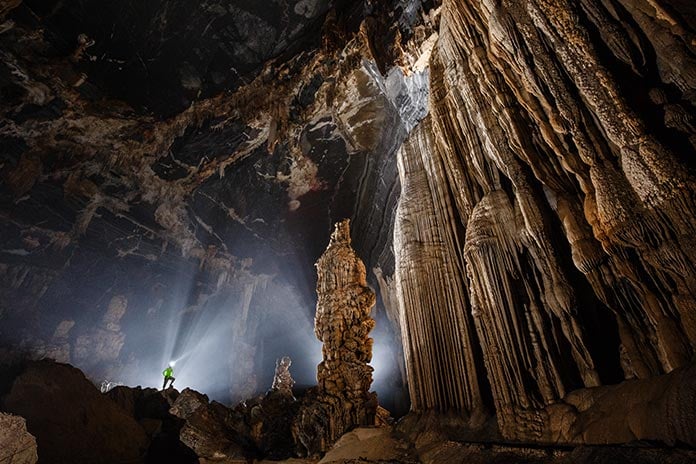
__637051782550081035.jpg)
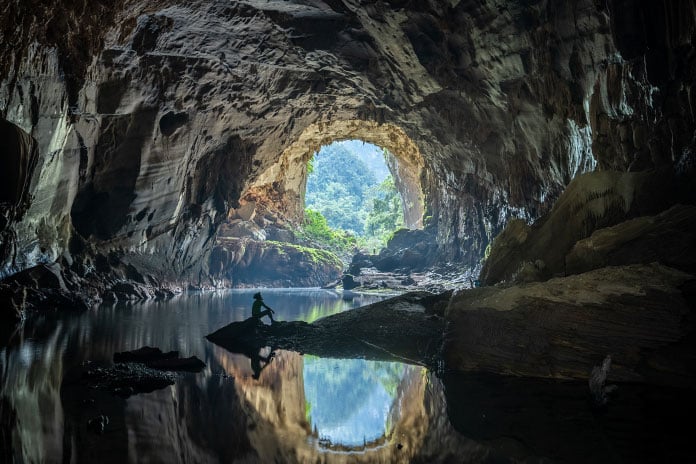
__637051777074859032.jpg)
__637051780703588520.jpg)
__637051781488596056.jpg)
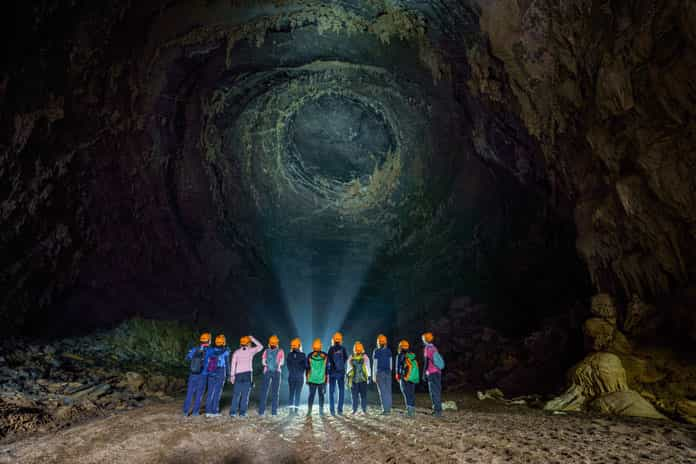
__637051767008903435.jpg)
__637051774329206026.jpg)
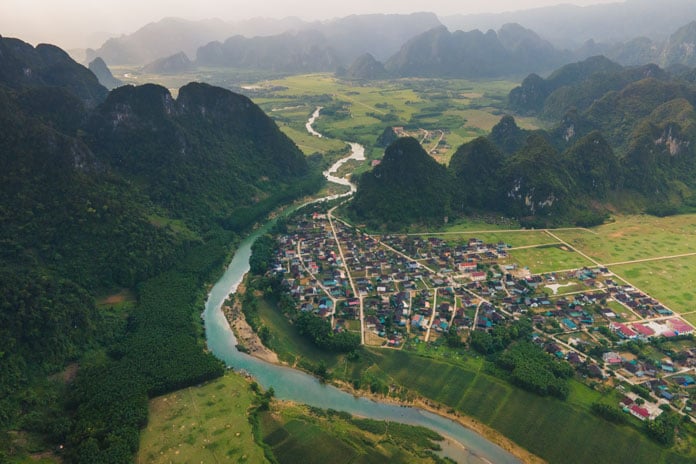
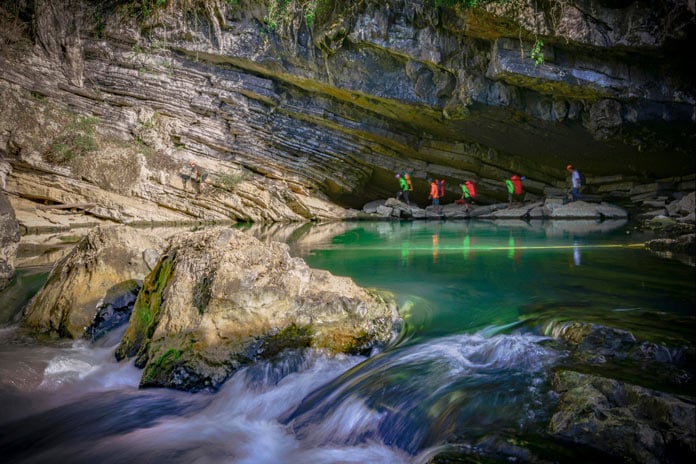
__637740499994967442.jpg)
